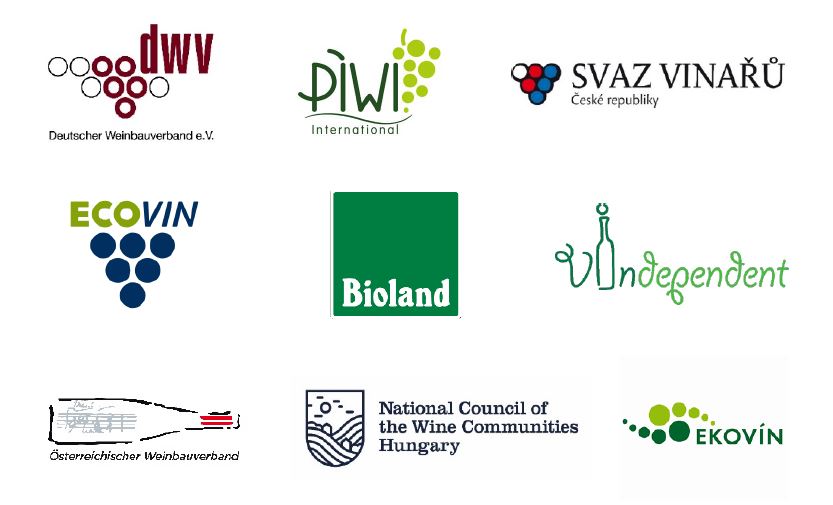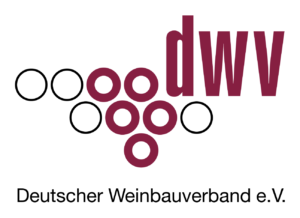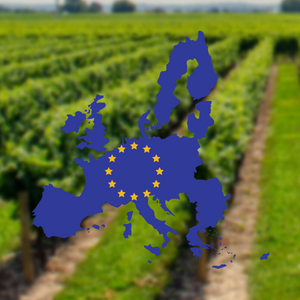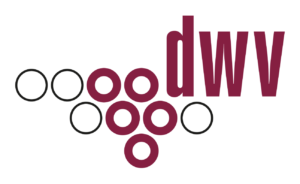Background – Major Peronospora infections in viticulture in many European countries
Due to climate change, viticulture in many European countries is increasingly facing extreme weather events and weather situations that remain in place over a long time. The consequences have, on the one hand, been seen in the long phases of draught (for example in the years 2015, 2018, 2019 and 2020) and, on the other hand, in the long phases of heavy rains and long-lasting humidity – like last year. The latter meant that last year, predominantly the wine growing regions of Central and Southern Europe (e.g. Switzerland (CH), the Champagne (F), Burgundy (F), the Jura Mountains (F), Bordeaux (F) and South Tyrol (I)) and all wine-producing regions in the Federal Republic of Germany experienced heavy Peronospora infections in many vineyards, some of which suffered extreme yield losses. Some vineyards could not be accessed by vehicle, making the required plant protection measures even more difficult. Frequent vehicle access destroys the ground and leads to unsafe driving conditions under wet conditions as well as increased fuel consumption. Copper products, as a contacting agent that washes off, have in recent years of long-lasting precipitation offered insufficient plant protection against Peronospora infections. Sustainable protection of the ground deserves particular attention. Organic viticulture in particular faces major challenges during such years.
Challenge for the individual wineries – high individual impact
In 2016, many businesses suffered yield losses and as such economic losses, while 2021 again resulted in significant economic impacts for the businesses affected by the Peronospora infections. In the long term, businesses cannot survive if they suffer yield losses in two of six years due to the limited options available against plant pathogens – e.g. a lack of products, unstable soils, limited effectiveness etc.
Challenges for the whole wine sector in relation to sustainability, climate change and the achievements implementation of political targets goals
There is a great general interest in the profession to convert to organic farming. At the same time, economic risks are seen in the limited options available for action and the difficult framework conditions, especially for organic viticulture, in relation to the use of plant protection agents. The large-scale planting of new varieties which are more resistant to fungus is part of a medium- to long-term strategy. However, this requires sufficient vine planting material to be available. Moreover, the sales of those varieties which are resistant to fungus must be developed further. Switching varieties takes between 30 to 40 years. Old vines in particular are important for the quality of the wine. These circumstances influence the interest and ultimately the willingness to commit to organic viticulture. Given the changed framework conditions, especially the consequences of climate change, the economic viability and profitability of organic viticulture cannot be guaranteed in all cases so that reconversions back to non-organic farming must be expected. In addition, the number of businesses planning to or applying for a switch conversion is likely to be lower than expected and may even fall. This casts a shadow over the successes of organic viticulture in recent decades. The EU target of a 25 %- share of organic farming by 2030 (2020: 9.1 % of the farmed area EU-wide; source: EuroStat) is likely to move into the distant future. We must pave the path for organic viticulture and open up an economically sustainable perspective for the businesses.
The political targets have been set – the paths towards enabling organic viticulture to make its contributions are to be developed. Wine growers are also willing to make their contribution towards the European target goal of organic farming under the right framework conditions.
More options for action in plant protection required to reach the political objectives – making organic viticulture ready for the future
The aim is to safeguard the future of organic viticulture in Europe in relation to its economic viability and profitability, thereby reaching the objective of expanding the wine growing area farmed organically to 25 % of the total wine growing area by 2030. This means that the proportion of varieties more resistant to fungus must be increased, the forecast models must improve further and, where necessary, the options available for plant protection in organic viticulture must be designed in a way that organic viticulture can be economically successful in all wine growing regions. We believe that this is the central basic condition to reach the EU objective of a 25 %share of organic farming across the whole wine growing area and for safeguarding the future of organic viticulture across Europe in the first place. The potential of organic viticulture should be available to companies and farmed landscapes in Europe.
Short-, medium- and long-term strategies – more research needed, gaining support in Brussels – everyone with their partners.
We have identified the following possibilities and are open to more suggestions and alternative proposals
- We demand useful additional options for plant protection in organic viticulture. These could be implemented through limited and fixed-term permits, or through permits linked to the climatic conditions of phosphonates in organic viticulture. At the same time, this contributes to the optimisation and minimisation of copper use. We therefore encourage a renewed review of existing and new approaches at EU level.
- For a holistic approach, we also require increased cultivation of marketable grape varieties resistant to fungus as well as the establishment and further improvement of forecast models for plant protection.
- We are aiming to create a harmony between soil and plant protection and between the economic and environmental sustainability for businesses and the environment.
- We recommend expanding research into sustainable viticulture in order to be able to access comprehensive options for action in the medium- and long-term and to promote the development, as well as to accelerate the availability, of new grape varieties and permits for new products.
- We believe that targeted further education and practical training is a major task for all participants.







